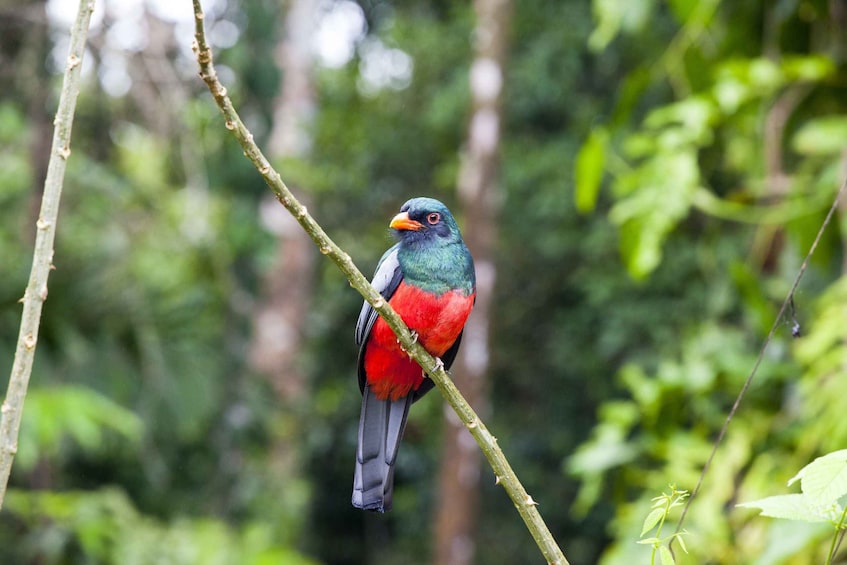Liberia is a country located on the coast of West Africa, bordering Sierra Leone, Guinea and Côte d’Ivoire. It is the oldest African republic rich in culture and history and is home to over 5 million people. Monrovia, the capital city of Liberia, can be found on the Atlantic coast, surrounded by palm-lined beaches such as Silver and CeCe. Beach towns along the coast include Buchanan and Robertsport, which is known for great surfing.
President of Liberia George Manneh Weah
The Liberian politician and former professional footballer George Manneh Weah has served as Liberia’s president since 2018. He was born on October 1, 1966, Monrovia, Liberia. In 1995, he was named African, European, and World Player of the Year-an unprecedented achievement. In addition to his talents on the field, he was active on behalf of his homeland, where he helped end a long civil war and became active in politics. During his time in the Senate, Weah served as senator and became president of Liberia on January 1, 2018.




During his presidency he has expressed interest and devotion in providing aid to the youth of Liberia.
“Liberia’s Youth Are Dear To My Heart”
President Weah
In all of these phases of our national experience, youth empowerment and strategic engagement is critical, “To you, our young generation, I promise to prepare and empower you so that you can take your rightful place in Liberia.” – President Weah
“Liberia’s Youth Are Dear To My Heart,” Says President Weah In Launching USAID-sponsored ProjectMonrovia, Liberia -. The President of the Republic, H.E. Dr. George Manneh Weah, has launched a USAID-Sponsored Youth Empowerment Program, stating that he has had a special place in his heart for the youth of the country.He said he holds youth so dearly to his heart not only because they represent the future of Liberia which he is committed to improve but also because the country’s young people do have explicit confidence and trust in him to transform Liberia.In a special statement Thursday, March 31, 2022 at the launch of the USAID-Sponsored Youth Empowerment Program, the President said, “the launch of this Youth Advance Project today, which targets our young men and women who are striving daily to make ends meet, is an important milestone in our quest to achieve transformative change outcomes that have a positive impact on their lives and livelihood.”
The project is designed to directly benefit 21,000 youths in three counties, including Montserrado, Grand Bassa and Lofa for a five-year period. It is also intended to increase the self-reliance and resiliency of Liberian youth by empowering them with relevant skills, work experience opportunities, and support to enable them to become productively engaged in their local economies.According to President Weah, the project is expected to have a significant impact on the youth empowerment policy of my Government, which is a fundamental pillar and objective of our national development plan, the Pro-Poor Agenda for Prosperity and Development (PAPD).He expressed special appreciation to Liberia’s international partners who he said continue to demonstrate strong support and commitment to the youth development endeavors of the Government.
Liberian Culture
“Culture is an integral part of a society, yearning for unity and oneness of purpose for its over-all development.”
President Weah
Did you know Liberia has a fun, unique handshake called the Liberian finger snap? 🤝
To do the Liberian finger snap, two people must mutually snap their fingers to make a snapping noise after performing a regular handshake.
The handshake can symbolise liberty and freedom.
History Facts
Her Majesty the Queen, Elizabeth II visited Liberia and met with President Tubman on the 26th of July 1962 to celebrate Liberia’s 115th year of Independence.
Biodiversity
Liberia is home to large sections of Upper Guinean Forest one of the world’s great tropical forest ecosystems that is rich in endemic and rare species.
Liberia’s portion of the Upper Guinea Rainforest is considered a biodiversity hotspot which provides a home to 140 species of mammals, and over 600 species of birds. The forest has over 2000 species of vascular plants (including 225 tree species) which store millions of tons of carbon.





